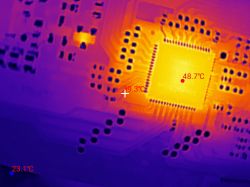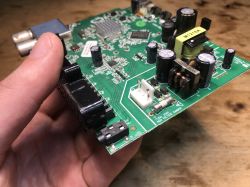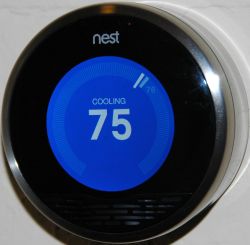Google has announced the end of support for older models of the Nest Learning series of thermostats. From 25 October 2025, these devices will no longer connect to Google Nest or Google Home apps. This means that equipment advertised as smart will suddenly lose much of its functionality and disappear from the app panel itself.
This applies to the Nest Learning Thermostat 1st gen (2011), 2nd gen (2012), and 2nd gen EU (2014) models.
What exactly will happen to the thermostats?
- The thermostat will be disconnected from the app and removed from your account.
- You will not be able to control it remotely, check status or receive notifications.
- Integrations with assistants and features such as Home/Away Assist will stop working.
- Nest Protect will no longer work with the thermostat (no emergency shutdown).
The device will continue to operate locally: control directly on the thermostat, support for schedules and temperature modes, access to settings available on the device itself. However, software and security updates will no longer be made available, which may affect long-term functionality.
Source: https://support.google.com/googlenest/answer/16233096
And what are the comments from users?
https://news.ycombinator.com/item?id=45147385
1. Preference for thermostats that are compatible with local automation - many users appreciate devices that work with Home Assistant and ZigBee/Z-Wave, highlighting that this increases independence from cloud-based services and makes them independent of manufacturers' decisions.
2. growing reliance on open-source solutions - some point out that they are developing open-source versions of Nest thermostats themselves, continuing the life of the hardware with local software and without dependence on Google.
3. Outrage at the manufacturer's decision - frustration towards Google/Nest is strong as users feel let down by the withdrawal of support, although the hardware technically still works.
4. Profitability of advanced thermostats - some people feel that it is not at all necessary to overpay for 'smart' hardware with a closed cloud infrastructure when a solid cheap thermostat can last decades without issue.
5. difficulty in finding durable and locally-enabled products - users complain that it is difficult to find devices that offer a modern user interface and at the same time work without internet connectivity.
6) Growing consumer awareness - more and more people admit that when buying smart appliances, they are starting to choose those that can be connected to Home Assistant and are independent of remote services.
7. Confidence in brands such as Honeywell and Reolink - there is an emerging recognition that it is worth investing in equipment from manufacturers that offer local control and do not make the user dependent on subscriptions or the cloud.
8. Practical concerns about the future of equipment - users note that equipment ceases to be 'smart' once support leaves and local operation becomes a key feature for longer life.
9. Frequent comparisons to ordinary 'dumb' thermostats - some argue that a traditional, reliable mechanical thermostat can last for generations, putting current digital products in an unfavourable light.
10. Encouragement of changes to the IoT business model - comments suggest that the technology company should allow the user to manage the device locally even after support ends, rather than forcing the user to buy new hardware.
My comment: here we have the typical problem of subscriptions and cloud services. The customer supposedly 'buys' the product outright, but the manufacturer can still disable or functionally restrict it at any time. In practice, this is acquiring the rights to use the hardware while remaining at the mercy of the manufacturer, who may deliberately restrict older product series to sell more newer copies. Most users don't give it a second thought, but in effect hand over control of their own device to a corporation. So instead of actual ownership, we have a kind of lease with unclear terms, where a software update can introduce restrictions instead of improvements, and the end of support becomes an excuse for 'forced' hardware replacement. This leads not only to additional costs for the user, but also to waste and faster product obsolescence. For this reason, I recommend buying products that at least give some sort of local control option, completely without the cloud.
Information about the Nest thermostat range: https://en.wikipedia.org/wiki/Nest_Thermostat
Source of title image: https://en.wikipedia.org/wiki/Nest_Thermostat#/media/File:Nest_front_official.png (Public Domain)
This applies to the Nest Learning Thermostat 1st gen (2011), 2nd gen (2012), and 2nd gen EU (2014) models.
What exactly will happen to the thermostats?
- The thermostat will be disconnected from the app and removed from your account.
- You will not be able to control it remotely, check status or receive notifications.
- Integrations with assistants and features such as Home/Away Assist will stop working.
- Nest Protect will no longer work with the thermostat (no emergency shutdown).
The device will continue to operate locally: control directly on the thermostat, support for schedules and temperature modes, access to settings available on the device itself. However, software and security updates will no longer be made available, which may affect long-term functionality.
Source: https://support.google.com/googlenest/answer/16233096
And what are the comments from users?
https://news.ycombinator.com/item?id=45147385
1. Preference for thermostats that are compatible with local automation - many users appreciate devices that work with Home Assistant and ZigBee/Z-Wave, highlighting that this increases independence from cloud-based services and makes them independent of manufacturers' decisions.
2. growing reliance on open-source solutions - some point out that they are developing open-source versions of Nest thermostats themselves, continuing the life of the hardware with local software and without dependence on Google.
3. Outrage at the manufacturer's decision - frustration towards Google/Nest is strong as users feel let down by the withdrawal of support, although the hardware technically still works.
4. Profitability of advanced thermostats - some people feel that it is not at all necessary to overpay for 'smart' hardware with a closed cloud infrastructure when a solid cheap thermostat can last decades without issue.
5. difficulty in finding durable and locally-enabled products - users complain that it is difficult to find devices that offer a modern user interface and at the same time work without internet connectivity.
6) Growing consumer awareness - more and more people admit that when buying smart appliances, they are starting to choose those that can be connected to Home Assistant and are independent of remote services.
7. Confidence in brands such as Honeywell and Reolink - there is an emerging recognition that it is worth investing in equipment from manufacturers that offer local control and do not make the user dependent on subscriptions or the cloud.
8. Practical concerns about the future of equipment - users note that equipment ceases to be 'smart' once support leaves and local operation becomes a key feature for longer life.
9. Frequent comparisons to ordinary 'dumb' thermostats - some argue that a traditional, reliable mechanical thermostat can last for generations, putting current digital products in an unfavourable light.
10. Encouragement of changes to the IoT business model - comments suggest that the technology company should allow the user to manage the device locally even after support ends, rather than forcing the user to buy new hardware.
My comment: here we have the typical problem of subscriptions and cloud services. The customer supposedly 'buys' the product outright, but the manufacturer can still disable or functionally restrict it at any time. In practice, this is acquiring the rights to use the hardware while remaining at the mercy of the manufacturer, who may deliberately restrict older product series to sell more newer copies. Most users don't give it a second thought, but in effect hand over control of their own device to a corporation. So instead of actual ownership, we have a kind of lease with unclear terms, where a software update can introduce restrictions instead of improvements, and the end of support becomes an excuse for 'forced' hardware replacement. This leads not only to additional costs for the user, but also to waste and faster product obsolescence. For this reason, I recommend buying products that at least give some sort of local control option, completely without the cloud.
Information about the Nest thermostat range: https://en.wikipedia.org/wiki/Nest_Thermostat
Source of title image: https://en.wikipedia.org/wiki/Nest_Thermostat#/media/File:Nest_front_official.png (Public Domain)
Cool? Ranking DIY Helpful post? Buy me a coffee.







